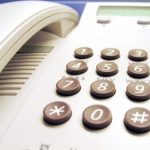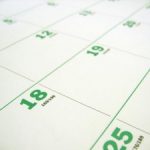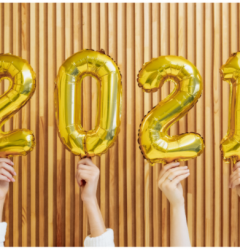
 Sales agents often wonder these questions:
Sales agents often wonder these questions:
- What are the best times to call?
- On what days are people more likely to respond?
- How long before a lead goes cold?
- Should I leave a voicemail?
- Should I email them too?
- Am I being too persistent?
If you often find yourself unable to connect to leads, receiving very few callbacks, and being dodged by decision makers, consider these statistics to improve your conversions.
Inbound Leads: When to reply
Inbound leads offer a great opportunity: they are already interested in your product. But how long does that interest last? 35% – 50% of sales go to the first responder. The optimal time frame to respond is within 5 minutes. However, 5 minutes is not always possible. Respond at most within an hour as most companies fail to respond even that quickly. That response time applies to any channel as well, including social media and email. Preferably respond with a phone call as well if a lead contacts you through another channel. A phone call adds a greater sense of urgency and still has the highest conversion rate for appointment setting.
“35% – 50% of sales go to the first responder. The optimal time frame to respond is within 5 minutes.”
Cold Calling
Cold calling is not what you would find on a list of “Favorite Things Sales Agents Like to Do”. It is exhausting and often agents are faced with evasive prospects, rejection, and only 5% of calls turn into appointments. 44% of agents give up on a lead after the first call. It can take up to 8 calls before a prospect turns into a sale. Some sales could take up to several months to occur. This means that the key is persistence. Call, leave a voicemail, and call again. Do not be afraid to be persistent, they can only say “No”.
“It can take up to 8 calls before a prospect turns into a sale.”
The Debate over Voicemail
Some say do and some say do not. The reasons against say voicemails are annoying for prospects and time consuming for sales agents. At EVS7, we say do leave a voicemail. 80% of calls go to voicemail on average. Not leaving a voicemail leaves the risk of a customer not knowing who or why you called. With the Parrot, you can leave personalized pre-recorded voicemails, saving time. The average voicemail response rate is 4.8%. Increase your personal percentage by leaving an informative, yet quick voice mail.
“80% of calls go to voicemail on average.”
Call Tips
Have agents that speak understandably. It’s an immediate turnoff for a customer if they hear:
- Mumbling
- A heavy accent, or
- Lots of background noise (a huge indicator a call center is calling them)

Best Times to Cold Call
Most people would consider 12 pm to 1 pm or after 6 pm as the best times to call. Surprisingly this notion is false for all the reasons you would consider it to be true. The time between 12 pm to 1 pm is popular for lunch meetings and after 6 pm you intrude on personal time.
In reality, 8 am to 10 am and 4 pm to 5 pm are the best times to call. Why? At 8 am to 10 am, people are just getting started with their day and are less likely to be in meetings. The same applies to 4 pm to 5 pm, the only difference being that their day is ending and most likely slowing down. Those 2 time slots also allow for an increased chance for decision makers to be available as meetings usually do not occur during those hours.
“8 am to 10 am and 4 pm to 5 pm are the best times to call.”
Looking at specific days, the best days to qualify leads are Wednesdays and Thursdays from 6:45 to 9 a.m. and 4 to 6 p.m. Wednesday and Thursday are in the middle of the week, which gives time for prospects to make a decision. The worst days to call are Mondays from 6 a.m. to noon and Fridays in the afternoon. Monday is the absolute worse day to connect to or qualify leads and Friday is good for connecting to leads but performs poorly on qualifying leads.
“The best days to qualify leads are Wednesdays and Thursdays from 6:45 to 9 a.m. and 4 to 6 p.m. The worst days to call are Mondays from 6 a.m. to noon and Fridays in the afternoon.”
There’s a Best Time to Email, Too
Since we’re on the topic of “best times to call” and because the Parrot lets you manage emails, now’s a good place to briefly discuss the best days and times to send emails. Sometimes sending an email is preferable over placing a phone call or leaving a voicemail due to the type or length of content you want customers to receive. If you decide to go this route, the best days to send email are on Tuesday, Wednesday, and Thursday. This makes sense because people are in work mode and their work involves checking their inboxes – where your email will appear, too!
Shy away from sending emails on Monday because people are slower to do things as it’s the first day of their workweek. Lastly, you should probably never send an email on Friday because people are finishing their workweek. On Friday, the thought process is “It’s almost the weekend. I will open that email later,” but then what do you know? That email gets pushed down out of sight as it becomes buried underneath other emails that were sent to them over the weekend.
So, Tuesday, Wednesday, and Thursday are the best days to email. How about the best time?
The best time to email depends on the day and content but consider it safe to shoot them out at 9:30 in the morning as many people check their inboxes around 10 am. It makes sense because most people are settled in at their workplace by this time. A majority actually read their emails around 6 a.m. – which is perfect for telemarketers since they cannot legally call people before 8 a.m. Why not give customers something to read if you can’t talk to them? You should! Overall, the best advice is to do some good ol’ A/B testing. Try out different days and times and see which emails have the most opens and highest click-through rates. You’ll eventually find the sweet spot that works best for your customers.
Final Words on Calling Times
Sales is a multi-step process. Timing and persistence are 2 big factors that turn leads into buyers. Never expect to make a sale on the first call. On average it takes up to 8 calls before a prospect is turned into a sale. While you can not apply the timing stated to all your prospects, instead try to prioritize your calls. Time warm leads and sales that are close to being closed during those optimal hours and days. For cold leads and inbound calls, continue with persistence, make sure to leave a voicemail and send an email, and always reply to either a call, email or inquiry on social media at most within an hour.
When it comes to sales, timing is only one of the many factors for success. Make sure to read our guide on how to create a sales strategy.


